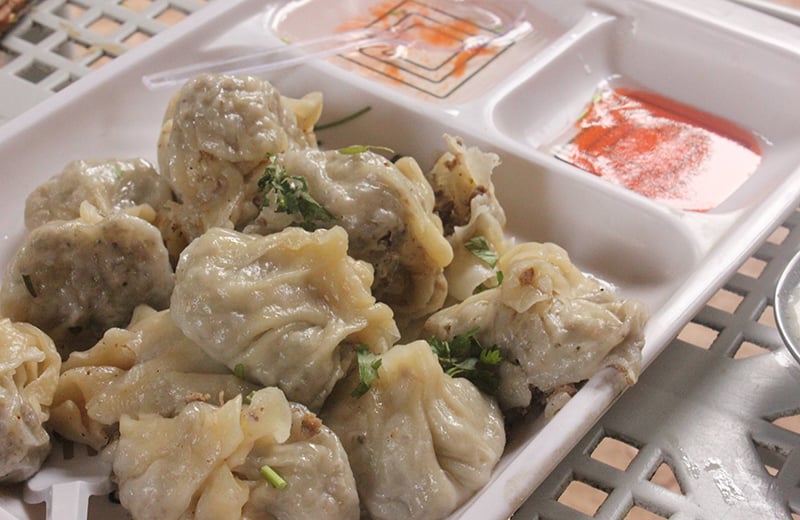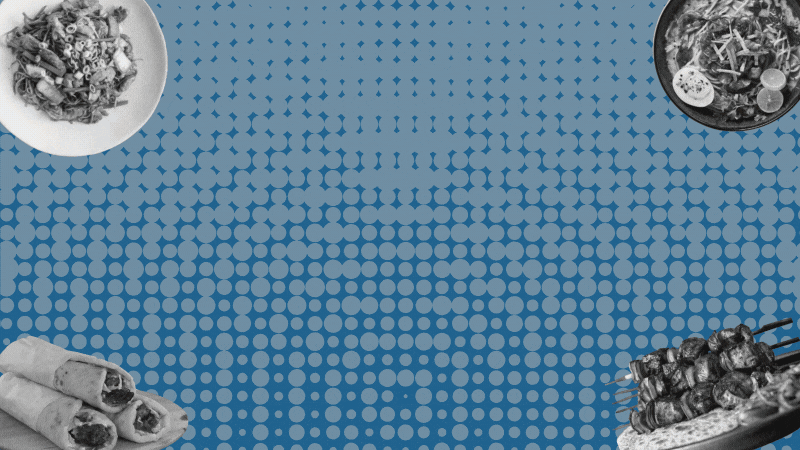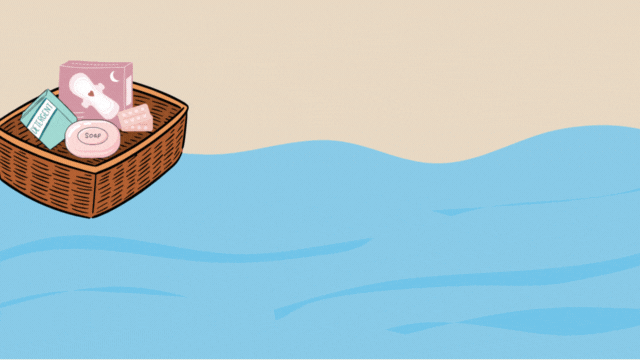Want a 'special' paratha? Maantu Gul Kitchen serves fare from Hunza with a twist
I wouldn't want to put anybody off by calling it a dhaba, but Maantu Gul Kitchen isn't your average dhaba anyway.
A couple of years ago, I was traveling the country for a research assignment and ate at quite a few legit, roadside, in-the-middle-of nowhere dhabas. All of which were so grey and beige and dusty.
So the first thing that sets Maantu Gul Kitchen apart is how green it is. Tucked away behind the trees adjacent to the Faisal Mosque with a well-tended green lawn at the front, it doesn’t really look like a typical dhaba. But as you walk in and settle down, it feels just like one.
 |
| The verdant Maantu Gul Kitchen doesn't look like a dhaba, but offers traditional food and then some — Photograph by the author |
Paratha galore
As far as food goes, the dhaba has all of the standard fare to offer: chai, daal, karahi, and most of it is very good. But the parathas are a cut above the rest.
They have plain, aloo (potato), beef and chicken parathas. For the ultimate mega paratha, order Maantu Gul's Special Paratha, which is loaded inside and out, stuffed with potato and beef inside and topped with chicken, cheese, and egg. However the melt-in-your-mouth plain cheese paratha is my favourite. Paired with a tall glass of lassi and an omelette, it makes for a close to perfect breakfast.
In fact, you can get pretty much everything on the menu with cheese if you wanted. Want some pakoras? Get them with cheese. Aloo paratha? Add some cheese. Now I haven’t tried this one, but the menu says you can get Mitha Paratha with cheese too.
 |
| Maantu Gul Kitchen's Special Paratha is a meal-and-a-half on its own — Photograph by the author |
With love, from Hunza
The head chef and owner, Aslam Pervez, is from Hunza and reluctantly came to Islamabad over a decade ago for medical reasons. After high school, he enrolled in Hashoo Foundation’s Hospitality Management Training Program and has since worked at hotels like Pearl Continental, Marriott and Serena. About two years ago, he decided he wanted to open a place to call his own, and Maantu Gul Kitchen was born.
Running his own establishment has allowed Pervez to introduce his customers to some traditional Hunza cuisine, like Dawdoo soup, Chap Shuroo (bread filled with a spiced chopped beef mixture), Mantu (steamed dumplings filled with meat) and Chamus (apricot juice). The Chap Shuroo left me unimpressed (overstuffed with an extremely hot spicy filling) but the Mantu dumplings were quite good.
 |
| A traditional Hunza dish called Mantu, these meat-filled steamed dumplings are a must-try — Photograph by the author |
Most dhabas are often males-only establishments, but not this one. Granted the male:female ratio is around 17:2, but at least you won’t be the only woman there. They even have a curtained section if you want ‘parda’ for privacy. Maantu Gul Kitchen is always busy and on weekends you’ll see a lot of families there for breakfast. It’s a great spot for a post-work chai-and-paratha snack too.
However, it's good to know that the service can be a bit slow and you'll be paying a bit more than usual for your paratha.
But go to Maantu Gul Kitchen because there's nothing else like it — you will not be disappointed.
From the kitchens of Aslam Pervez: Chamus recipe
Aslam was generous enough to share his recipe for Chamus (apricot juice) with us. It’s very easy to make, all you need are apricots and water, and no additional sugar is required. It’s good for you too; apricots and apricot juice are an excellent source of vitamin A.
 |
| Chamus is a great use of apricots when they're in season — Photograph by the author |
Ingredients
500g dried apricots
1 litre boiling water
Method
In a large glass or ceramic bowl, add the apricots and pour the boiling water over them. Cover the bowl and leave the apricots to soak for 1 hour.
After an hour has passed, squash and mash the apricots with your hands to blend them into the water. (You may use a potato masher for this step but, according to Aslam, the juice is tastier when this is done by hand.) You should end up with have a thick pulpy orange-coloured mixture.
Strain the apricot mixture. Store the strained liquid in the refrigerator until the juice is thoroughly chilled.
Tip: The juice is quite thick, so you can thin it out a bit by adding water, if you prefer.
Sahar Habib is a technical writer by day, and maintains the blog www.chaipluscake.com in her spare time.












